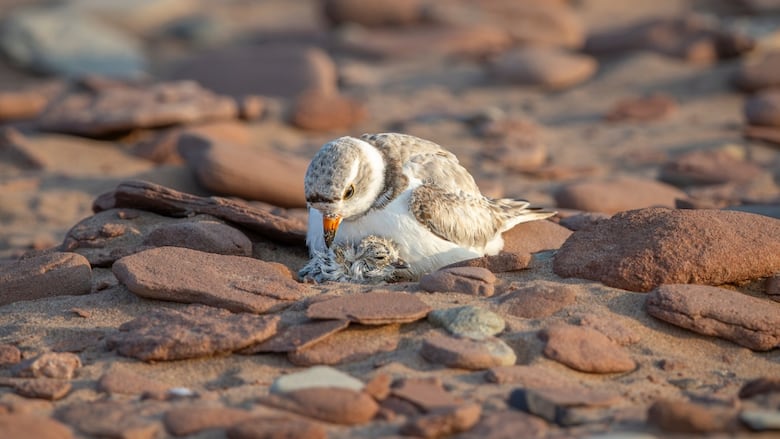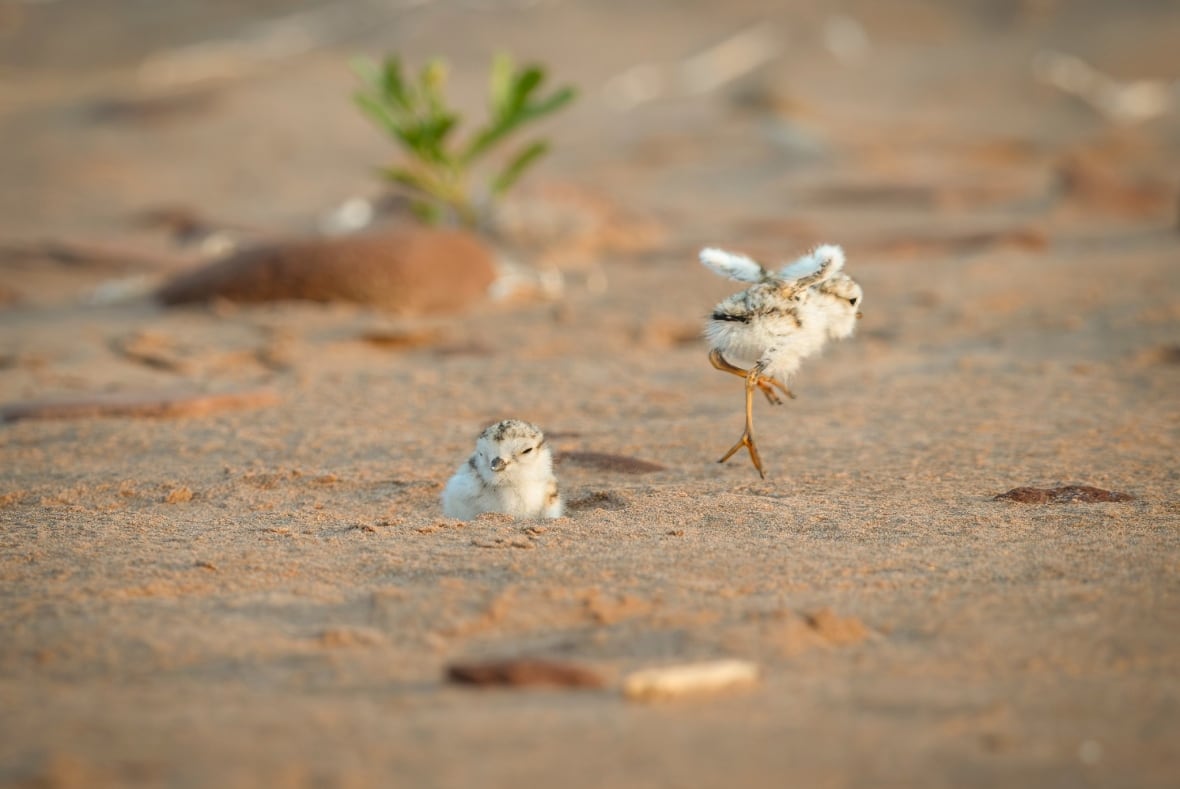P.E.I. photographer finally captures rare moment as piping plover chicks hatch
‘They look like little cotton balls with legs and beaks’

A longtime dream has finally come true for Glen Strickey.
The Prince Edward Island photographer has spent years hoping to capture a rare moment — the hatching of endangered piping plover chicks. Last month, after years of trying and waiting, he finally did.
"They're some of the cutest baby birds out there. They look like little cotton balls with legs and beaks," Strickey told CBC's Island Morning.
"They run around. They're very active and super cute, just to watch them kind of go around grabbing their little insects."

The piping plover has been listed as endangered by the Committee on the Status of Endangered Wildlife in Canada since 1985.
Only about 60 of the birds are typically seen on P.E.I. each year. They usually leave the Island in late August for warmer winter locations like the southern U.S. or the Bahamas and return in April.
Strickey said their nests are so tiny and well-camouflaged that spotting them, let alone photographing the chicks hatching, can be incredibly difficult.
Behind the scenes
Strickey said getting the photos took careful planning and patience.
He visited the site either early in the morning or around sunset to avoid attracting attention to the birds, and always kept his distance to ensure he wouldn't disturb them.
"I have an extremely long lens. The photos that I posted were taken from 30 metres, 50 metres away," he said. "I set up quite far away from the birds where there's absolutely no stress to them whatsoever."

The nest he photographed last month wasn't inside P.E.I. National Park, where nesting areas are marked with signs and roped off to keep people away.
A friend tipped him off about the location, which had two active nests. Strickey visited one of the sites for 24 days straight, checking on the eggs daily. He was away when one of the nests hatched, but he got lucky with the second.
"I was actually able to see, basically, a chick hatch, which was really an incredible experience to actually have photos of the chick while it's still wet out of the egg."
Last year, things didn't go so well. Strickey had found a few potential nesting sites, but missed his chance.

"One last year involved me driving 45 minutes each direction, then jumping on my bike and biking... three or four kilometres to a spot where I then had to hike about another three kilometres each direction," he said.
"I did that every day for a couple of weeks, checking the nest, waiting for it to hatch. And then I had to go away for a week or so, and came back and they were gone."
Protecting the bird
Strickey has shared his photos with Island Nature Trust in case they're useful for conservation purposes.
He also posted the pictures on social media, along with messages about how the public can help protect piping plovers.
When walking on the beach, he said, people should stay close to the water. The nests are very well-camouflaged and usually sit just high enough on the beach to avoid the tide, meaning they're almost invisible to the untrained eye.
"It would be very possible for you to disturb or walk on them, or you can get close enough that the parents will abandon the nest as well," Strickey said.

If people see adult piping plovers, he said they should assume there are chicks nearby, even if they can't see them.
Even inside P.E.I. National Park, where some areas are roped off to protect plover nesting sites, Strickey said people need to be careful, as chicks can wander well outside the protected areas.
Another important step: leash your dog.
He said dogs running loose on beaches can pose a serious threat to piping plovers and their young. Strickey said keeping dogs on-leash throughout the summer is key.
In the end, he said protecting piping plovers is about more than the birds themselves.
"If you have piping plovers on your beach, that means your beach is a healthy beach. And all Islanders want their beaches to be healthy," he said.
"We don't want to get into a situation where we don't see them on our beaches anymore."
With files from Island Morning